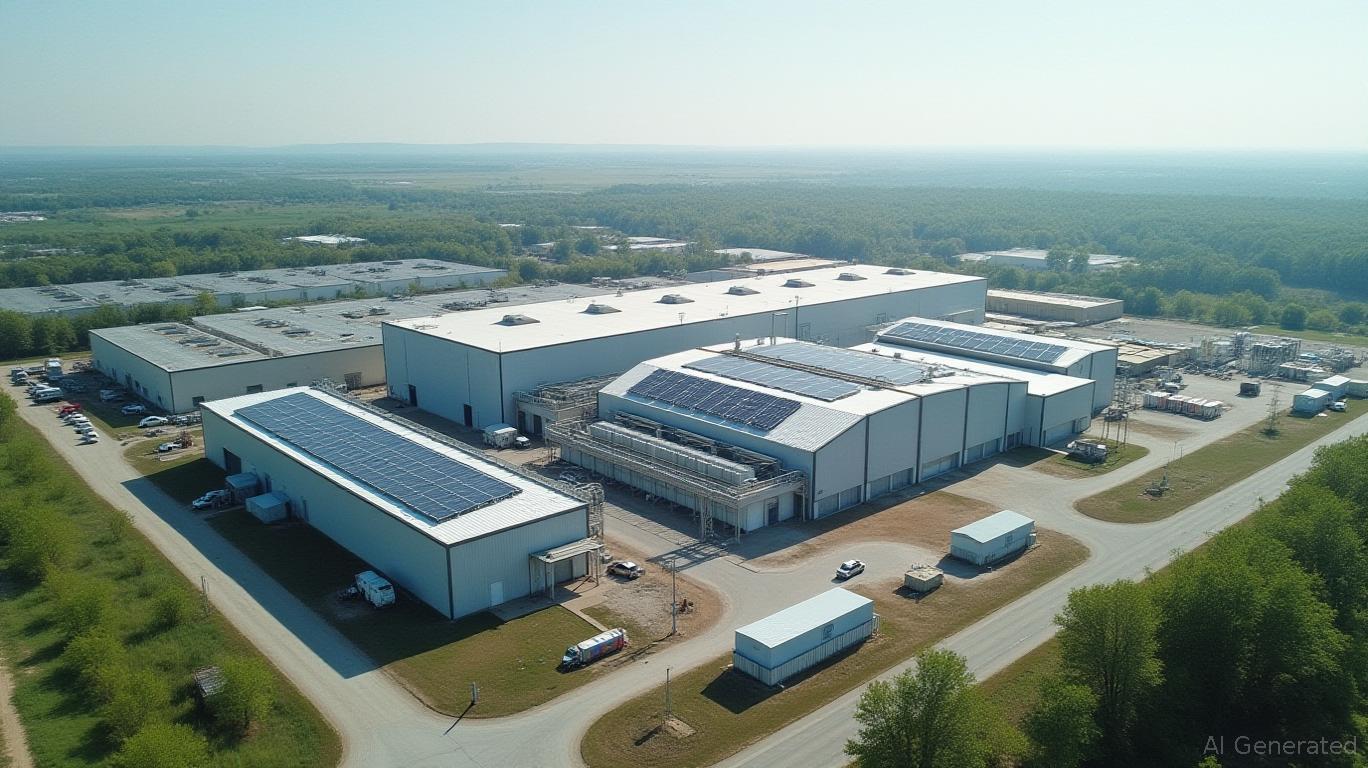Lithium Lightning: How LG Energy Solution is Igniting the $80 Billion ESS Revolution
The U.S.
market is undergoing a seismic shift—one that could make or break companies vying to capitalize on its $80 billion trajectory by 2035. At the epicenter of this transformation stands LG Energy Solution, which has just pulled off a masterstroke by becoming the first global battery manufacturer to mass-produce lithium-iron-phosphate (LFP) batteries for energy storage systems (ESS) in the U.S. This strategic move isn't just about avoiding tariffs; it's a bold play to dominate a market where demand is exploding, competition is faltering, and geopolitical risks are reshaping supply chains.The Tariff Tsunami: Why China's Battery Dominance is Crumbling
For years, the U.S. grid relied on Chinese imports for 90% of its lithium-ion battery cells. But the Biden administration's escalating tariffs—now at 64.9% on Chinese LFP cells and set to hit 82.4% by 2026—have made those imports prohibitively expensive. Meanwhile, domestic production of LFP cells remains in its infancy, leaving a gaping hole in the market.

LG's response? Outsmart the tariffs. By repurposing 30% of its Holland, Michigan EV battery facility to produce LFP cells for ESS, LG has secured a tariff-free advantage. Starting this June, its Michigan plant will churn out LFP batteries with 300 Wh/kg energy density—on par with Chinese rivals—while offering a 15-year/10,000-cycle warranty, a critical edge for grid-scale storage.
Why LFP is the New Gold in ESS
LFP batteries aren't just cheaper; they're safer and longer-lasting. For sectors like AI data centers, where uninterrupted power is non-negotiable, or renewable grids needing round-the-clock stability, LFP's inherent thermal stability and superior cycle life make it the default choice.
LG's Michigan plant is already locking in deals with industry heavyweights like Delta and Terra-Gen, positioning it to supply 25% of U.S. grid battery demand by 2026. With 80% of Fortune 500 companies pledging net-zero targets by 2030, demand for ESS is set to skyrocket—especially as AI data centers consume 30% more energy annually than traditional servers.
The IRA Tax Credit: Fueling LG's Fire
The Inflation Reduction Act (IRA) provides a $35/kWh tax credit for domestic battery production—a lifeline for LG's Michigan venture. This subsidy slashes production costs by up to 40%, making LG's LFP cells price-competitive with Chinese imports even before tariffs.
Critics worry about policy risks: Republican proposals to eliminate tax credits for “non-strategic” battery chemistries could disrupt this. But LG's early-mover advantage and vertical integration—controlling cathode materials and recycling—give it a buffer. Plus, the IRA's $60 billion clean energy spend ensures U.S. policymakers will prioritize domestic manufacturing.
Why Wait? The Risk of Missing the ESS Wave
The ESS market is no longer hypothetical. By 2030, 45% of new U.S. energy storage deployments will support renewables and grids, per BloombergNEF. LG's head start in LFP manufacturing means it can:
- Undercut Chinese competitors stuck in a tariff trap.
- Capture AI data center demand as hyperscalers like Amazon and Google build energy-independent facilities.
- Monetize its EV synergies: Its Michigan plant's dual focus on EV and ESS batteries creates economies of scale others can't match.
Invest Now: LG Energy Solution is the Battery Play of the Decade
LG's stock (KRX: 3735.KQ) has already surged 35% year-to-date on ESS news, but this is just the beginning. With a $3 billion investment in its Michigan plant and plans to expand U.S. capacity to 50 GWh by 2027, LG is primed to corner a $120 billion U.S. ESS market by 2035.
The risks? Policy uncertainty and raw material costs. But LG's vertical integration (securing lithium and cobalt supplies through partnerships) and diversified revenue streams (EV batteries still account for 70% of sales) make it far less volatile than pure-play ESS firms.
Bottom Line: The ESS boom is here, and LG is the only player with the scale, tech, and strategy to dominate it. This is a once-in-a-decade opportunity to invest in a company positioned to win a $100 billion+ market—while mitigating EV market risks. Act fast: The next wave of energy storage won't wait.
Time to position your portfolio for the lithium lightning.

Comments
No comments yet